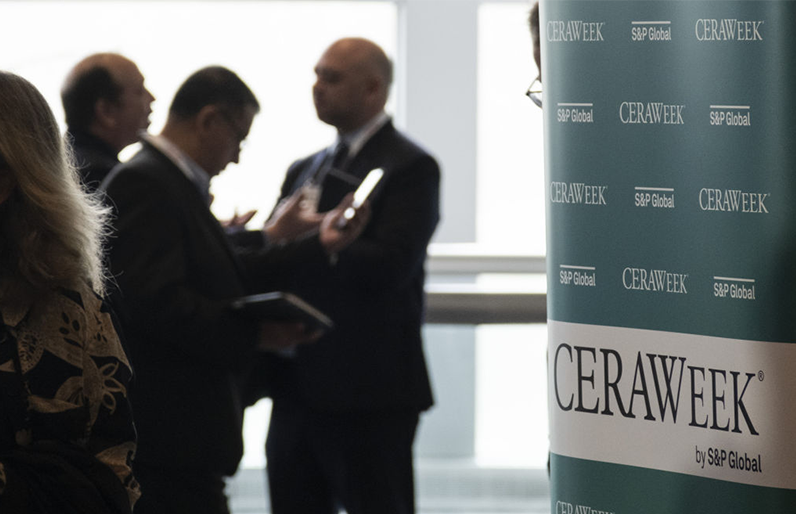CERAWeek, Houston, Texas. At one of the world's most significant energy gatherings, bringing together the industry’s biggest movers and shakers, the theme of this year's conference was "Navigating a Turbulent World: Energy, Climate and Security," encapsulating the fact that energy has moved from being the forgotten sector to front of mind for the masses.
In this piece, we take a reflective look at the three key themes that emerged from the conference, and what they mean for communications:
- Energy security vs energy transition
- The regulatory ecosystem
- The role of technology and cost implications
Energy security vs energy transition
What was said:
The consequences of the war in Ukraine continue to dominate the conversation. Energy leaders anticipate prices to remain high, but meaningful economic projections remain close to impossible to make. S&P Global Vice Chairman Dan Yergin noted, "The oil demand and the expectations for demand just bounced around between what the Fed is going to do and what China's doing."
Despite a mild winter and ongoing market stabilization, there is still fear of disruption due to supply uncertainties and limited spare production capacity. Western countries are racing to replace Russian oil and gas, with efforts to ramp up production and develop new routes.
The energy transition remains a key focus, with the shift from oil to gas evident, driven by Europe's demand and gas increasingly seen as a cleaner bridge fuel in the energy transition.
While the narrative has refocused on that paradigm, it also increasingly sees industry leaders voicing wariness around the transition being "painful and chaotic," as noted by Chevron CEO Mike Wirth in saying, "We have to be very careful about turning System A off prematurely and depending on a system that doesn't yet exist and hasn't been proven."
What this means for communications:
The energy trilemma – and clearly articulating the need to provide secure, affordable and sustainable energy to all – will remain very much on the communications agenda for the sector. Remembering that the energy transition isn’t one moment in time, but a decades-long transition process, will be key. The sector needs to regain control of the narrative.
Regulatory ecosystems - a catalyst and barrier to decarbonization
What was said:
Despite the refocus on energy security and affordability, the urgent need for decarbonizing energy systems remains an important topic. Again, the war in Ukraine is challenging the traditional energy landscape. A driving topic is the contrasting regulatory environments that are emerging between the US and Europe.
The Inflation Reduction Act (IRA) was at the center of discussions. The $370 billion plan provides the US with a predictable financial framework and aims to stimulate investment, particularly in renewables. Its simplicity and scale has set the US on the path to take the lead in the energy transition.
The European Union, by contrast, has struggled to formulate such a simple legislative framework, resulting in further deterring investors. Europe's windfall profit tax on oil and gas producers further discourages investment and undermines efforts to transition to sustainable energy.
What this means for communications:
Striking the right communications balance regionally will be important. While opportunities abound in favorable regulatory markets, and many will focus on the US, the public perceptions of the need for the energy transition are more favorably balanced in the EU. Companies that operate across both jurisdictions will have a balancing act in hitting a communications sweet spot that works across contrasting public vs. regulatory operating environments.
Technology is a driving force, but a realization on cost is dawning
What was said:
The importance of accelerating breakthrough technologies remains high on the agenda, although cost is an increasing focus: technologies that have been in focus for several years, like hydrogen, CCS and battery storage, all come with a significant cost premium.
The positive momentum around technologies like hydrogen and CCS is being tempered by calls for simplified rules to attract more significant investment to enable large-scale market scale-up. There is also a need for a new conversation, as noted by ExxonMobil CEO Darren Woods, about how "people's willingness to pay a premium for low-emissions fuels [...] hasn't quite taken off yet." This adds to the complexity of the discussion on high-potential, but high-cost alternative solutions that will ultimately impact consumers.
Meanwhile, at the other end of the scale, calls to improve energy efficiency – an "easy, fast, and cheap" measure to cut across all energy systems – has seen a renaissance. An "invisible opportunity" and "not sexy" efficiency can be the first step toward the energy transition, said Samantha Gross, the Director of the Energy Security and Climate Initiative at the Brookings Institution. Underlining this high cost vs. low cost conundrum, BP’s CEO Bernard Looney highlighted at the conference that fuel efficiency in new light vehicles is having a bigger impact on global oil demand than rising sales of electric vehicles.
What this means for communications:
The industry has communicated extensively on the need for technology to address the energy transition, and high-cost, high-profile technologies will remain a key focus. However, the energy transition spans multiple opportunities across a range of scale. There is a need for the industry to demonstrate that it’s not just the expensive, large-scale projects that are key, but that there are areas of focus at all levels of the energy system that must play a pivotal role.


